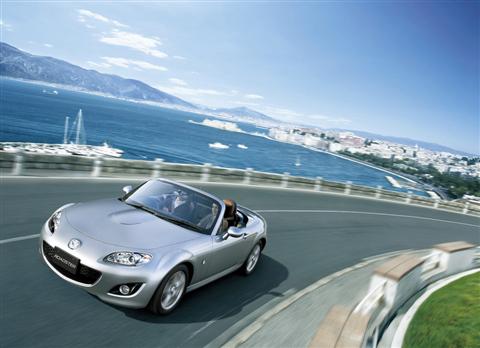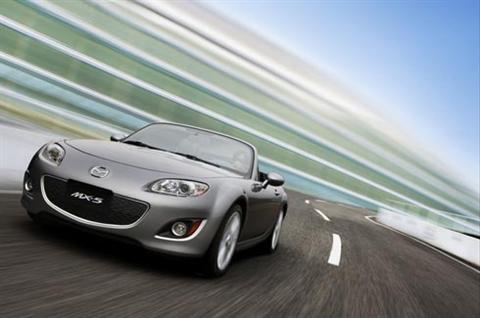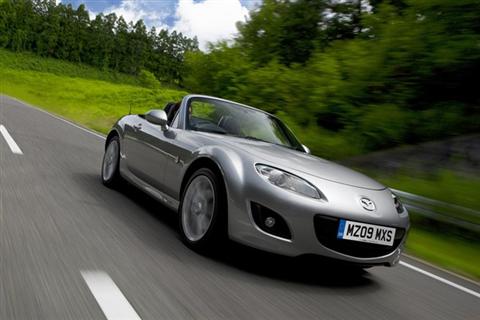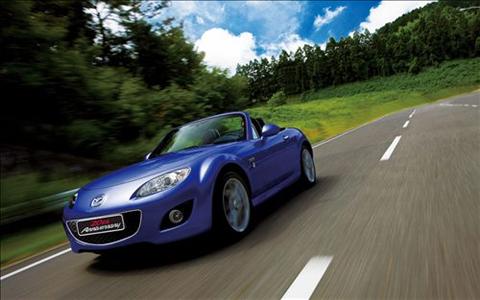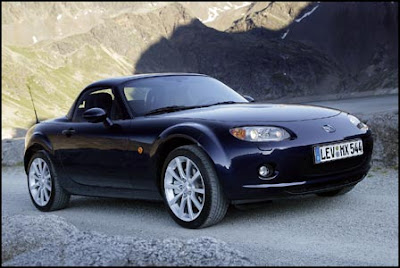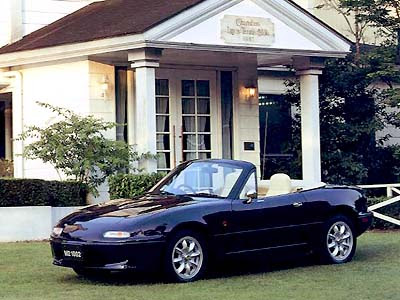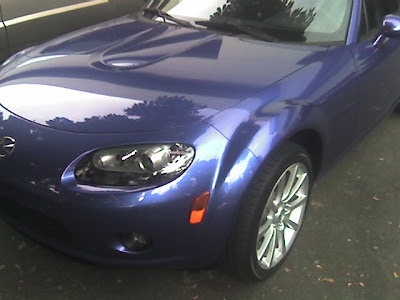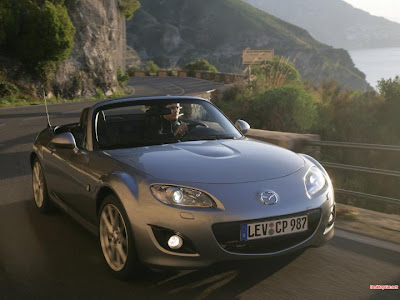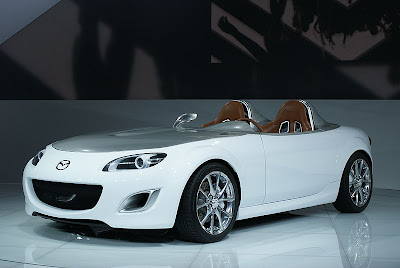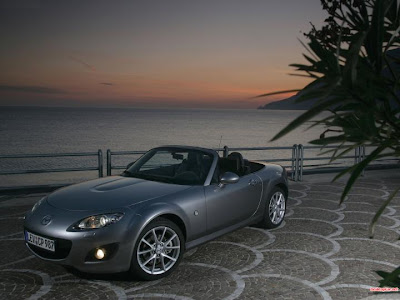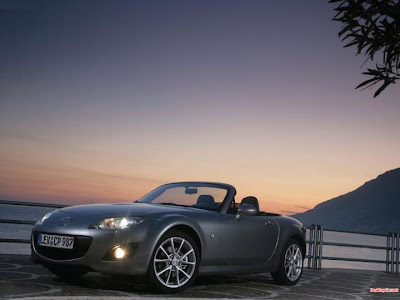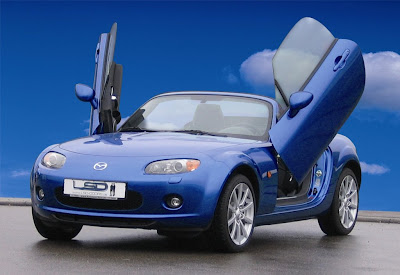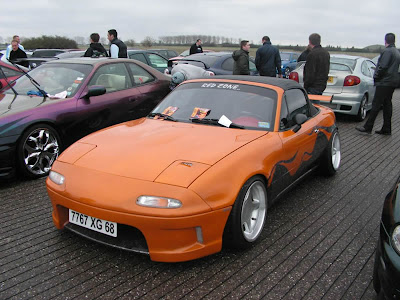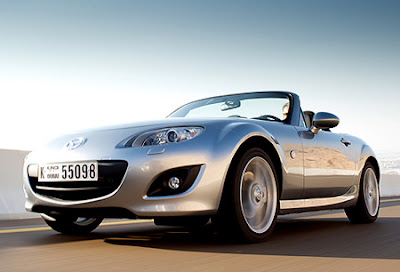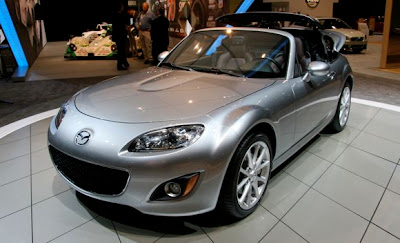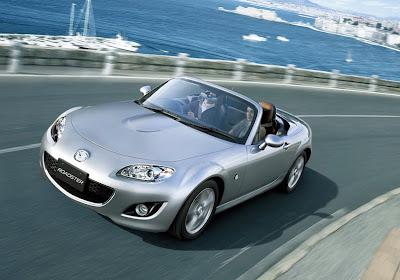The original
MX5 came with a 1.6 L (98 cu in) dual overhead cam inline four-cylinder engine, producing 90 kW (120 bhp) at 6,500rpm, and 136 N·m (100 lbf·ft) of torque at 5,500rpm. The engine employs an electronic fuel injection system using a vane-type air flow meter and a camshaft angle sensor instead of a distributor. This engine, codename B61P, had been previously used in the 323 series. Standard transmission was 5-speed manual. Japan and the USA got an optional automatic transmission which proved unpopular; these markets also received an optional viscous limited slip rear differential, although were only available for cars with a manual transmission. To achieve the low introductory price, the base model was stripped. It had steel wheels, manual steering, roll-up windows, and no stereo or AC. Power steering, AC, and stereo were added as standard equipment in later years.
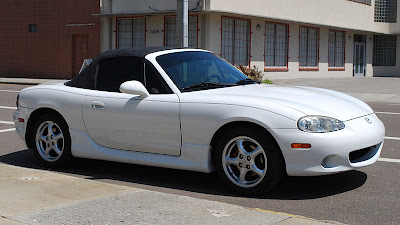
Picture Of
Mazda Mx5 CarsThe
NA could reach 60 mph (97 km/h) in 9.4 seconds and had a top speed of 190 km/h (120 mph). This first generation of
Miata (often referred to as the
NA) included a special edition in 1991, produced in British Racing Green with the first use of tan interior.
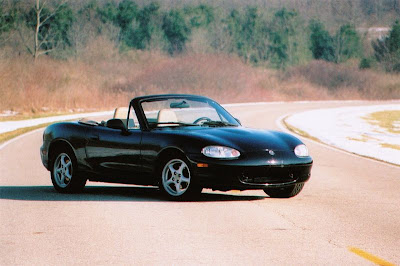
Picture Of
Mazda Mx5 Cars1500 LE (Limited Edition) cars were produced in 1993. This model featured red leather interior, upgraded stereo, Nardi shift knob, leather wrapped steering wheel, cruise, limited slip differential, power windows, power mirrors, power steering, air conditioning, BBS wheels, Bilstein shocks, front and rear spoilers, ABS brakes, stainless sill plates and Harley style peanut tank door speaker trim. All '93 LE cars came in black.

